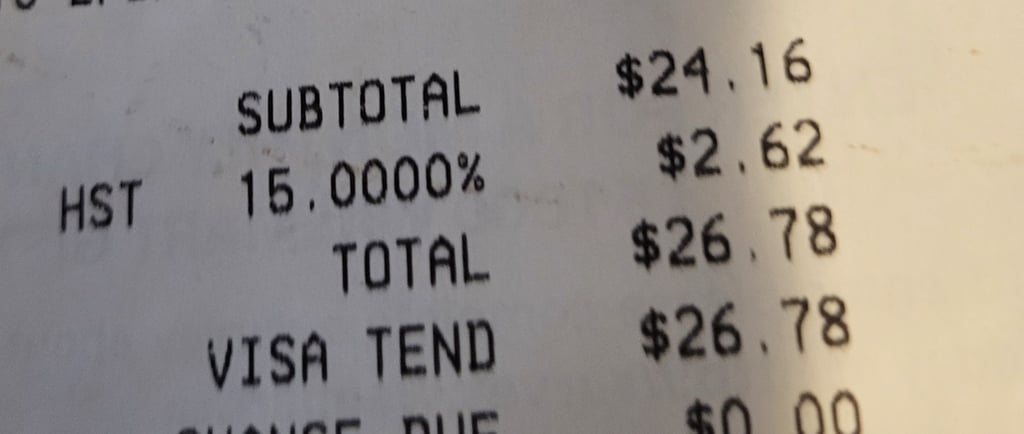Navigating Canadian Sales Tax
A Comprehensive Guide for Businesses and Consumers
5/23/20254 min read


Canada's sales tax system can feel like a complex maze, especially for newcomers and those running businesses across provincial lines. From the universally applied Goods and Services Tax (GST) to the regionally specific Provincial Sales Taxes (PST) and Harmonized Sales Tax (HST), understanding the intricacies is crucial for compliance and smart financial planning. This comprehensive guide will break down the Canadian sales tax landscape, providing clarity for both consumers and businesses.
The Three Pillars of Canadian Sales Tax & The Current Rates: GST, PST, and HST
Canadian sales taxes generally fall into three categories:
Goods and Services Tax (GST): A federal tax applied across Canada at a rate of 5%. This is the bedrock of the system and applies to most goods and services except for certain exemptions (more on those later).
Provincial Sales Tax (PST): Levied by certain provinces, the PST is a retail sales tax charged on the purchase of goods and services within that province. The rate varies depending on the province. As of today, the provinces that have PSTs are:
British Columbia (BC): 7%
Manitoba: 7%
Saskatchewan: 6%
Quebec (QST): 9.975% (Technically, Quebec has its own version of GST called the Quebec Sales Tax (QST), which is administered similarly to PST).
Harmonized Sales Tax (HST): A combined GST and PST into a single tax. Provinces that have adopted the HST replaced both the GST and PST with this single tax. The provinces with HST, and their corresponding rates, are:
New Brunswick: 15%
Newfoundland and Labrador: 15%
Nova Scotia: 14%
Ontario: 13%
Prince Edward Island: 15%
How it Works: A Practical Example
Let's say you're buying a new laptop for $1,000 in Ontario (HST province). Here's how the tax breaks down:
Price of laptop: $1,000
HST (13%): $130
Total Cost: $1,130
Now, imagine you're buying the same laptop in British Columbia (GST and PST province):
Price of laptop: $1,000
GST (5%): $50
PST (7%): $70
Total Cost: $1,120
As you can see, the final price changes depending on the province and the specific taxes levied.
Exemptions and Zero-Rated Supplies: Navigating the Gray Areas
While the basic principles are straightforward, understanding the nuances of exemptions and zero-rated supplies is crucial.
Exempt Supplies: These are goods and services that are not subject to GST/HST or PST. Common examples include certain healthcare services, financial services, and educational services. No GST/HST or PST is charged on these items.
Zero-Rated Supplies: These are taxable supplies, but the tax rate is 0%. Common examples include basic groceries (like milk, bread, and vegetables) and prescription medications. While technically taxable, no GST/HST or PST is actually collected at the point of sale. This is different from exempt supplies because businesses providing zero-rated supplies can still claim input tax credits (ITCs).
Sales Tax for Businesses: Registration, Collection, and Remittance
For businesses operating in Canada, sales tax isn't just a cost; it's a significant part of operations. Here's what businesses need to know:
Registration: Businesses with annual taxable sales exceeding $30,000 are required to register for GST/HST. While registration is voluntary for businesses below this threshold, it might be advantageous due to the ability to claim ITCs. If only selling in provinces with PST, registration with the province's tax authority is required.
Collection: Businesses must collect the applicable GST/HST or PST on taxable goods and services they sell. This requires accurate record-keeping and proper point-of-sale systems.
Remittance: Businesses are responsible for remitting the collected GST/HST/PST to the Canada Revenue Agency (CRA) or the respective provincial tax authority. This usually involves filing regular returns (monthly, quarterly, or annually, depending on the business's gross revenue).
Input Tax Credits (ITCs): Businesses registered for GST/HST can claim ITCs to recover the GST/HST they paid on eligible business expenses. This reduces the net amount of tax they need to remit. ITCs are not available for PST.
Place of Supply Rules: Determining where a supply is considered to have been made is crucial for businesses operating across provincial boundaries. These "place of supply" rules dictate which tax (GST, PST, or HST) should be charged on a particular transaction. These rules are complex and depend on the nature of the goods or services supplied.
Key Considerations for Businesses:
Accurate Record-Keeping: Maintaining detailed records of sales, purchases, and taxes collected is paramount for compliance and accurate reporting.
Software and Technology: Utilizing accounting software or POS systems that automatically calculate and track sales tax can significantly simplify the process.
Professional Advice: Consulting with a tax professional or accountant is highly recommended, especially for complex business structures or cross-provincial operations.
Staying Updated: Tax laws and regulations are subject to change, so businesses must stay informed about the latest updates from the CRA and provincial tax authorities.
Common Mistakes to Avoid:
Failing to Register: Operating a business with taxable sales exceeding $30,000 without GST/HST registration can result in penalties.
Incorrectly Charging Tax: Applying the wrong tax rate or failing to charge tax on taxable supplies can lead to audits and assessments.
Not Claiming ITCs: Missing out on ITCs can result in paying more tax than necessary.
Late Filing and Remittance: Failing to file returns or remit taxes on time will incur penalties and interest charges.
Conclusion
Navigating the Canadian sales tax landscape requires diligence, accurate record-keeping, and a solid understanding of the applicable rules and regulations. By understanding the differences between GST, PST, and HST, and by adhering to the compliance requirements, businesses can minimize errors, avoid penalties, and optimize their tax position. For consumers, understanding how sales taxes impact their purchasing decisions empowers them to make informed choices. When in doubt, consulting with a tax professional is always a wise investment to ensure compliance and peace of mind.
